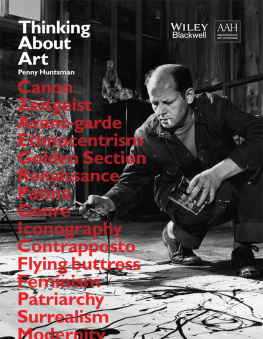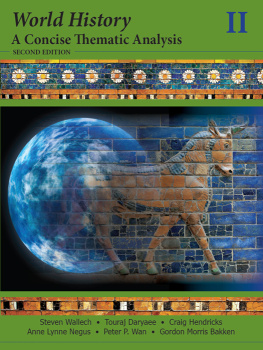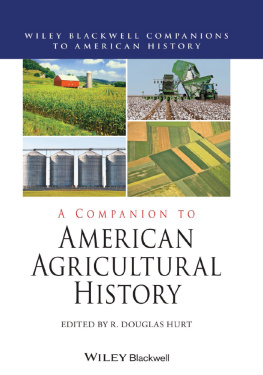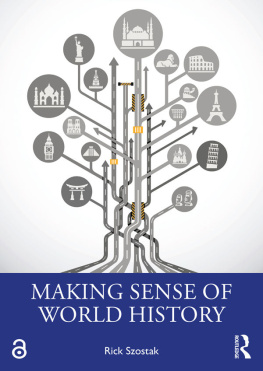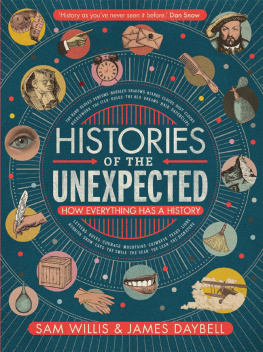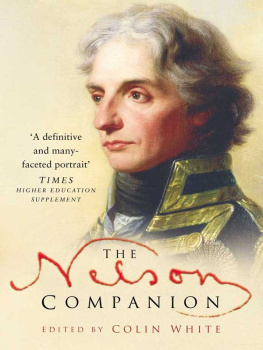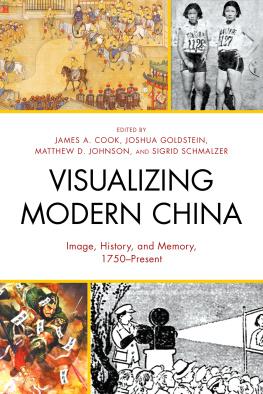
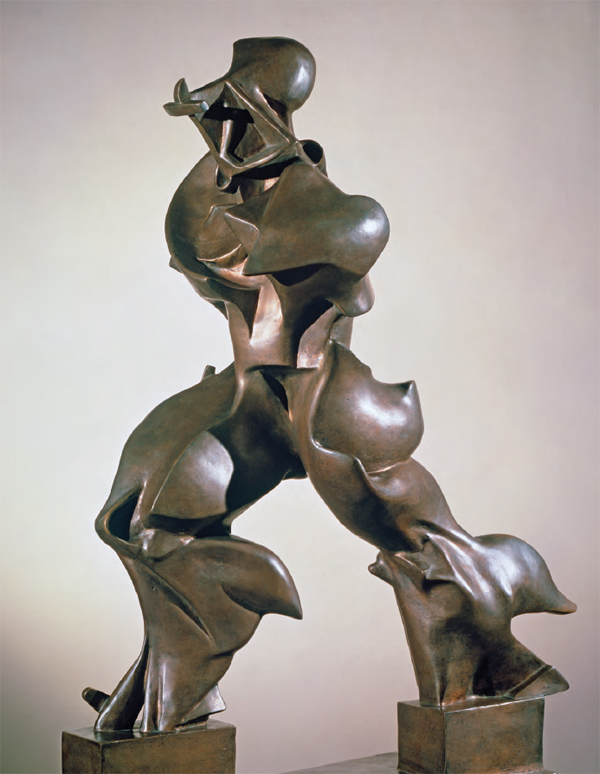
Umberto Boccloni
Unique Forms of Continuity in Space
1913, bronze, 1175876368 mm, cast
1972, London, Tate,
Source:Tate, London 2015.
Thinking About Art
A Thematic Guide to Art History
Penny Huntsman
This edition first published 2016
2016 Association of Art Historians
Registered Office
John Wiley & Sons Ltd,
The Atrium, Southern Gate, Chichester,
West Sussex, PO19 8SQ, UK
Editorial Offices
350 Main Street, Malden, MA 02148-5020, USA
9600 Garsington Road, Oxford, OX4 2DQ, UK
The Atrium, Southern Gate, Chichester,
West Sussex, PO19 8SQ, UK
For details of our global editorial offices, for customer services, and for information about how to apply for permission to reuse the copyright material in this book please see our website at www.wiley.com/wiley-blackwell.
The right of Penny Huntsman to be identified as the author of this work has been asserted in accordance with the UK Copyright, Designs and Patents Act 1988.
All rights reserved. No part of this publication may be reproduced, stored in a retrieval system, or transmitted, in any form or by any means, electronic, mechanical, photocopying, recording or otherwise, except as permitted by the UK Copyright, Designs and Patents Act 1988, without the prior permission of the publisher.
Wiley also publishes its books in a variety of electronic formats. Some content that appears in print may not be available in electronic books.
Designations used by companies to distinguish their products are often claimed as trademarks. All brand names and product names used in this book are trade names, service marks, trademarks or registered trademarks of their respective owners. The publisher is not associated with any product or vendor mentioned in this book.
Limit of Liability/Disclaimer of Warranty: While the publisher and author have used their best efforts in preparing this book, they make no representations or warranties with respect to the accuracy or completeness of the contents of this book and specifically disclaim any implied warranties of merchantability or fitness for a particular purpose. It is sold on the understanding that the publisher is not engaged in rendering professional services and neither the publisher nor the author shall be liable for damages arising herefrom. If professional advice or other expert assistance is required, the services of a competent professional should be sought.
Library of Congress Cataloging-in-Publication Data Huntsman, Penny.
Thinking about art : a thematic guide to art history / Penny Huntsman.
pages cm
Includes index.
ISBN 978-1-118-90517-3 (cloth) ISBN 978-1-118-90497-8
(pbk.) 1. ArtHistory. 2. ArtThemes, motives. I.Association of
Art Historians (Great Britain) II.Title.
N5303.H86 2015
700.9dc23 2015021567
A catalogue record for this book is available from the British Library.
Cover image: Jackson Pollock, 1949. Photo Martha Holmes / LIFE Picture Collection / Getty Images
Cover design by Atelier Works LLP
Companion Website
Please visit the companion website at www.wiley.com/go/thinkingaboutart to view additional, freely available content for this title.
- Exam Practice Questions for each chapter
- Other useful books and references for each chapter
Acknowledgements
Five years ago, I sat in my back garden with Caroline Osborne, former Chair of the Association of Art Historians Schools' Group, and together we decided that an A-level textbook must be written to support art history in further edu- cation. We decided upon its plain-speaking tone and easy-to-follow form.
I devised a 10,000-word outline; over the next couple of years this contribution would grow more than ten-fold and, before I knew it, I had an entire manuscript. In order to satisfy the current A-level demands, it was decided that, alongside the thematic chapters, an additional section would be provided as a stand-alone or complementary Toolbox. This is essentially a list of questions or prompts which aids the reading of any given work of art or architecture. I am particularly indebted to Caroline Osborne for having a list of questions far more exhaustive and well-structured than mine. I give her thanks for sharing these invaluable points, for collating all of the many school reviews and for proof-reading the manuscript with an expert eye.
I also owe thanks to Tamara Trodd, a former AAH trustee at the start of the project, who really helped me to refine my initial ideas, and to my friend and a highly respected English teacher, Jane Lewis, who spent many an hour in my study proof-reading and offering constructive grammatical criticism. As the manuscript began the long process to publication, the staff at Wiley Blackwell offered invaluable support. The staff over in Boston provided technical assistance and emotional strength when the pedagogy of the book became the focus. Towards the end of a long process, I called upon the help of Graham Whitham. I have held Graham in very high regard for many years; indeed, I wrote the book in response to the dynamism of the AS Specification that he wrote. Graham provided indispensable expert knowledge and tidied many a loose end that I simply did not have the energy to face. Graham, along with Caroline Osborne and current AAH trustee Chrissie Bradstreet, reviewed the entire manuscript; I thank them all individually for such a protracted undertaking.
I did not set out to write a book; the book found me in many ways. For that reason, especial heartfelt thanks go to the headmistress, Louise Higson, and her leadership team, Alison Binns and Mandy Higgs, at Farlington School for their constant support and enthusiasm. Most importantly, I must thank my husband, Mark, and my children, Hannah, Laurence and William, for the thousands of hours I shut myself away to bring the manuscript to completion. I could not have completed the task without their support.
This book was written with heart and with a desire to facilitate art teachers - indeed, any teachers - to pick this subject up and introduce it into their schools and colleges - something less likely to occur without a textbook of sorts to guide them. In terms of the support they offered, a couple of individuals meant more to me than they could have imagined at the time: Tom Christopherson, Head of Art and Law Studies at Sotheby's Institute of Art, London, and Michael Casartelli, then Procurement Manager at the V&A (now Head of Procurement, Tate), both of whom offered me very timely support and encouragement. I first met Michael on the staircase at the V&A where I singled him out as a member of staff to berate about the fact that the V&A's wonderful lost-wax process clip was not available to those students who could not make it to London. The next time we spoke, he told me the DVD had been uploaded onto YouTube for everyone to enjoy - that single gesture reminded me that even busy people care about making art history more inclusive. Both of these individuals actively support the inclusivity of the subject, and make time to listen to voices as unimportant as mine.
I would like to thank the following for allowing me private tours and detailed information on their respective buildings: MCC (Lord's Cricket Ground) London; James Breslin, former keeper of William Morris' Red House, Bexleyheath; and David Beever, keeper of the Royal Pavilion, Brighton.
Next page
